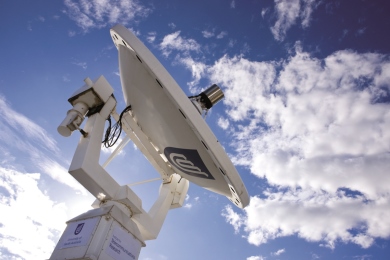25 September 2017
 The University of South Australia has welcomed this morning’s announcement of the new Australia Space Agency as a focus for Australia’s almost $3 billion industry.
The University of South Australia has welcomed this morning’s announcement of the new Australia Space Agency as a focus for Australia’s almost $3 billion industry.
UniSA Deputy Vice Chancellor: Research Professor Tanya Monro says Australian expertise in the wide range of technologies that support burgeoning space industries only needs to be focussed to reap important rewards for the nation.
“Enterprising collaborations with industry put us in the box seat to meet the engineering, commercial and legal challenges to viable space industries and make the most of our national expertise and potential,” Prof Monro says.
“At UniSA we are keen to support the goals of the Agency and we have already been working to establish a Cooperative Research Centre for Innovative Space Solutions that will further strengthen Australian research into satellite technologies and space systems and their commercialisation.
“Australia’s system of Cooperative Research Centres, which brings together industry, government and academic institutions to tackle R&D challenges, has been a highly successful model for translating research into product and practice.
“It is a model that perfectly matches UniSA’s own research ‘personality’ – industry-connected and solutions focussed.”
She says the University has worked with industry for more than 25 years on significant national and international projects in satellite communications, wireless technologies and remote sensing.
UniSA’s Institute for Telecommunications Research was part of Australia’s first space CRC and in 2002, an important player in the launch and tracking of FedSat, a 58kg microsatellite that was a landmark in Australia’s satellite and space communications research program.
Prof Monro says people often fail to make the link between space technologies and practical issues back on earth.
“Space-enabled communications, safety and security technologies are vital for countries like Australia with a huge remote land mass and seas to manage,” she says.
“Satellites and satellite systems support better management of primary industries, natural resources, vital weather forecasting, regional and remote communications, national security and a range of innovations that improve our health and safety.
“Systems supported by UniSA’s Institute for Telecommunications Research, have been used to extend telecommunications to some of the most remote regions on the plant and to establish communications networks across land and sea, even in conflict zones or regions devastated by natural disaster.
“In collaboration with Australian industries we want to bring the nation right to the forefront of innovation in space science, technology and policy and we want to lead that innovation here in South Australia.”
Prof Monro says a space CRC could support novel and innovative approaches to Spectrum Access and Management, leveraging both technological and regulatory considerations; explore satellite system modelling optimisation to support agile and responsive space requirements and look at data optimisation, fusion and management across the space and ground segments.
“With the platform of an Australian Space Agency, now is the right time to focus our efforts,” she says.
“Australia has just a .8 per cent of the global space sector market – but that small percentage still employs between 9,500 and 11,500 people.
“We have such enormous potential to build our contribution and it is strong research partnerships between business, universities and government that will build that growth.”
Media contact: Michèle Nardelli mobile 0418 823 673 email michele.nardelli@unisa.edu.au



